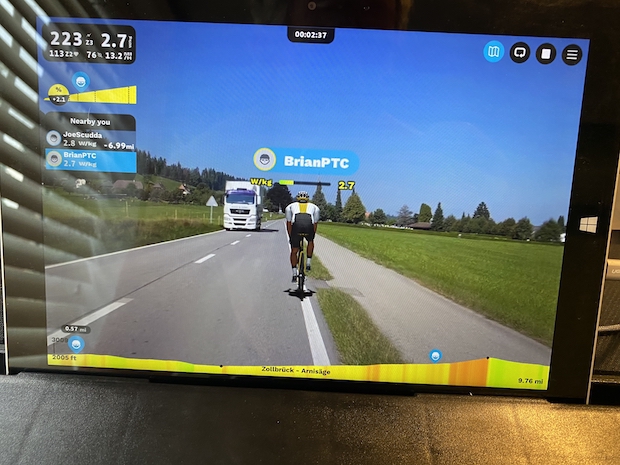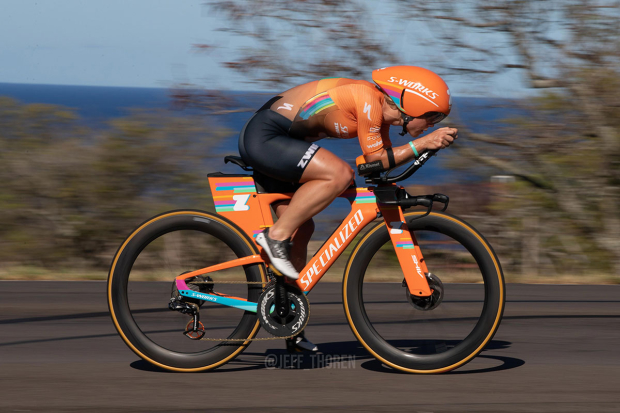Attacking Alpe du Zwift
It didn’t take more than a handful of rides on Zwift before I started wondering how quickly I could level up to unlock the gates and tackle Alpe du Zwift. Modeled after France’s legendary mountain, Alpe d’Huez, the 7.6-mile climb averaging 8.5% features 21 switchback turns and gains 3,396 feet before reaching the top.
Luckily for me and the thousands of others who rushed to the virtual gaming platform during the shelter-in-place orders in March, Zwift HQ decided to take down the barriers and provide anyone level 6 and above access to the grueling climb.
When I think back to the first time I tackled the climb on March 31st, I guess it was a bit of a miracle I even made it to the top. I hadn’t yet learned it was possible to adjust the trainer’s level of difficulty setting and wrestled with the bike one agonizing pedal stroke at a time at 100% intensity. I even saw sparks fly off my cassette a few times from pedaling so slowly and creating so much friction. I slumped over my handlebars upon reaching the top having sufficiently self-combusted as I hadn’t yet purchased a high powered fan. But despite being too exhausted and overheated to even soft pedal the descent that day, I had taken the bait and the climb had me hooked.
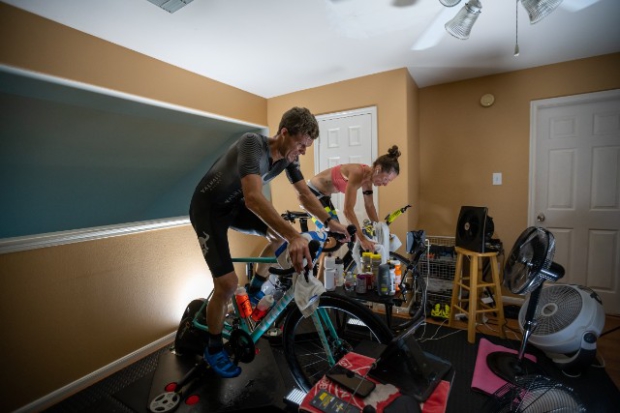
Over the past two months I’ve completed the climb 15 times and have learned a great deal from other riders, those with far more experience and familiarity with best practices on Zwift as well as those who have mastered pacing up the monster mountain. I even managed to convince the most voracious Zwifter I know, reigning Kona Age Group World Champ Jana Richtrova, a Level 50 Zwifter, to face off in a head to head handicapped race to see if that extra motivation would propel us to new PR’s up the steep slopes.
Below are some of the tips I learned and applied off the advice of others as well as some of Jana’s words of wisdom for anyone looking to maximize your efforts on Alpe du Zwift.
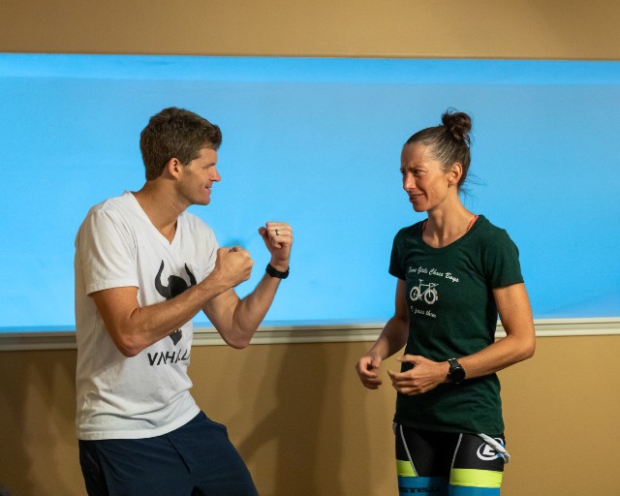
At the time of our face-off, Jana had completed the climb 13 times, and 7 times since March 19th. Her times were getting faster each week with a best of 45:21 on May 17th. The fastest I had made it up was 46:58 on May 16th, but had been getting slower in recent attempts. We agreed for her to give me a 1-minute head start to see if she could catch and pass me by the top. Sort of a reversal of Lifetime’s Battle of the Sexes and without the $200,000 payday to the winner. The prize here was simply local bragging rights.
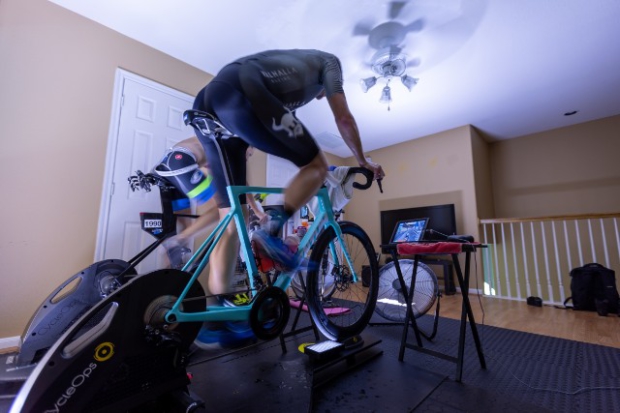
Jana and Jorge Martinez hosted the showdown at their E3 Training Solution's pain cave, complete with Saris H1 and H2 trainers, each fixed atop a homemade rocker board, enough fans to keep the room cool, a shared table to stay on top of hydration and a stable internet connection to run Zwift.
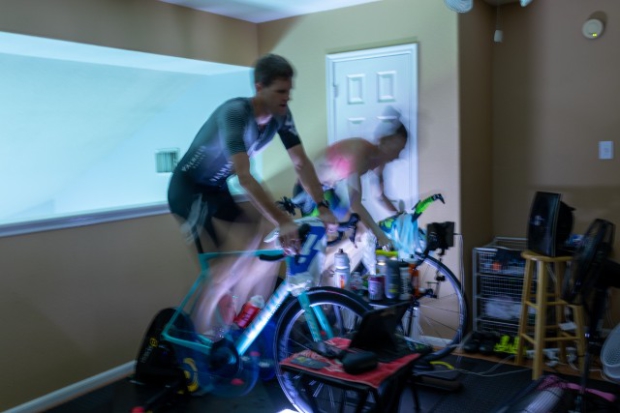
Getting in a proper warm-up is crucial before tackling the big climb, and even more so if you choose the shortest route to include the climb, Road to Sky. We mixed in some easy spinning with some hard pick up efforts so it wouldn’t be a shock to the system once we started the climb.
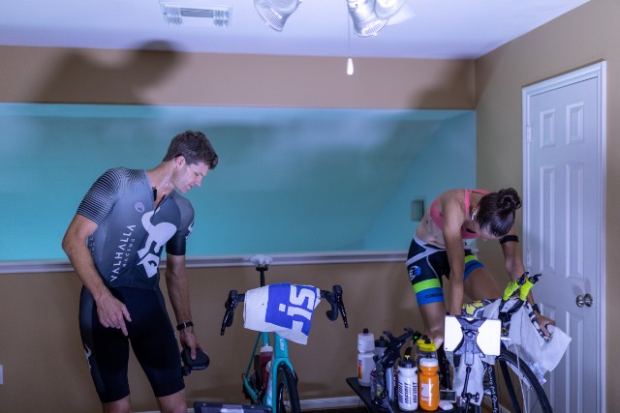
After finishing 20 minutes of riding for my warm up I hopped off the bike and blasted my legs with a Theragun to make sure all the muscles were ready to fire.
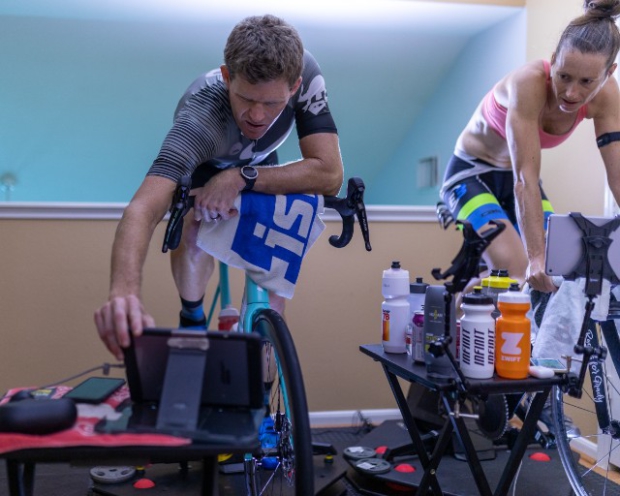
Where to set the trainer difficulty level is up to personal preference. Jana and I agreed to set it at the 50% mark. No matter where in the range you set your trainer you must still produce the watts to power yourself up the climb, but setting it in the lower range certainly smooths out the sting on those super steep pitches.
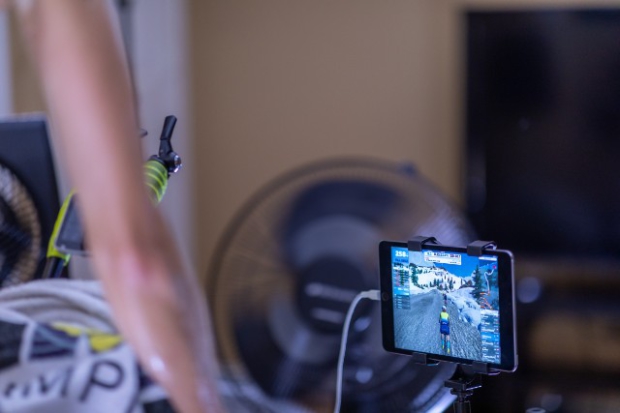
Choosing the right virtual equipment can prove beneficial. For this advice, I asked other Zwifters inside the Forum.
Ai_1 said, “If you’re not already, use the best climbing bike and wheels. That’s the Tarmac Pro and I think ENVE 3.4 unless you’ve won the Lightweight wheels in the Alpe lottery.”
Luckily I had previously won the Lightweight Miliensteins and also swapped out bikes on this advice.
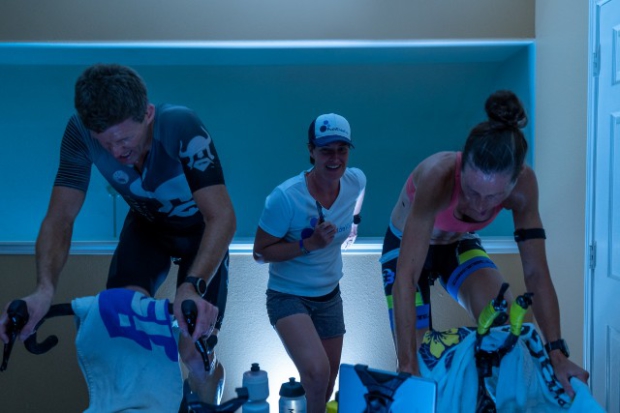
Titanflexr hit the mark with his suggestion of “fans fans fans.”
We had three fans blasting us with air, two friends on hand to provide moral support, and Jana’s good luck charm, Trifle the dog.
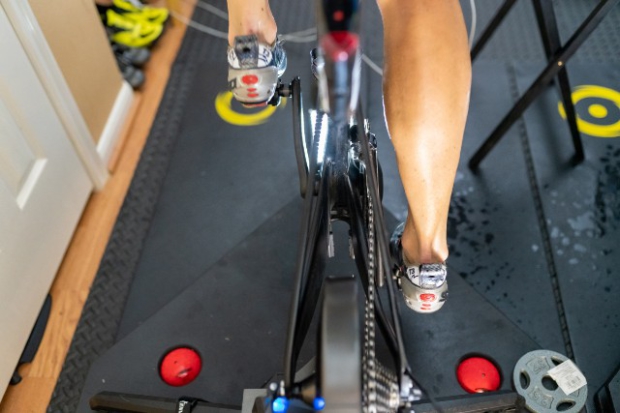
Masnart provided some excellent insight suggesting to “treat this as a race. Put in a mini taper, take caffeine and make sure your carbs are topped off.”
He added, “if you really want to maximize your e-setup you would use power pedal output as your power source for Zwift, and not the trainer's power source. This helps you gain all of the watts that are lost in the drivetrain of the bike. Could be up to 5 watts.”
While I relied solely on the Saris H1 trainer for my power reading, Jana used her power meter pedals.
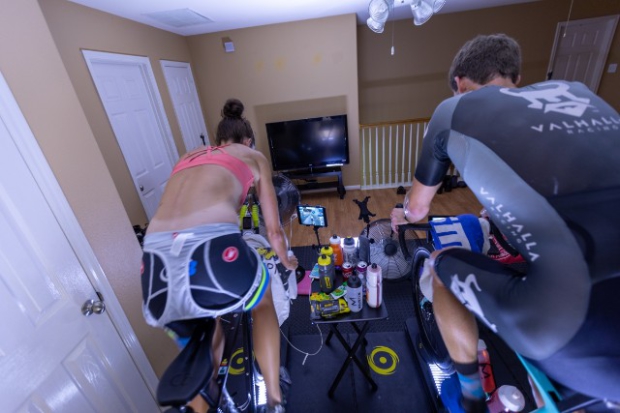
How you decide to pace the climb on the early slopes can set you up for failure or success. Jana said she had tried all different strategies: holding back the first half and pushing the second half, even effort, and going all out from the bottom and holding on. Ask a dozen different people and you’ll get a dozen different answers on pacing.
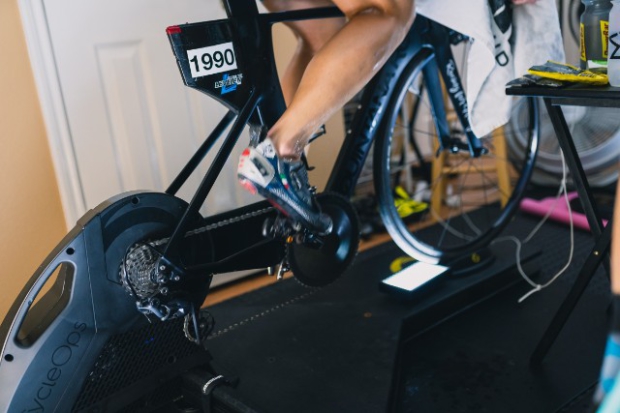
With two sub 40 minute ascents up Alpe du Zwift to his name, Mattsurf suggested the following as his go to pacing strategy, “Typically I aim for 95% of my FTP. After each corner I do a mental reset, and go again, repeat 21 times.” He also suggested the helpful tip of having some Coke handy as the caffeine would kick in by the end of the climb.
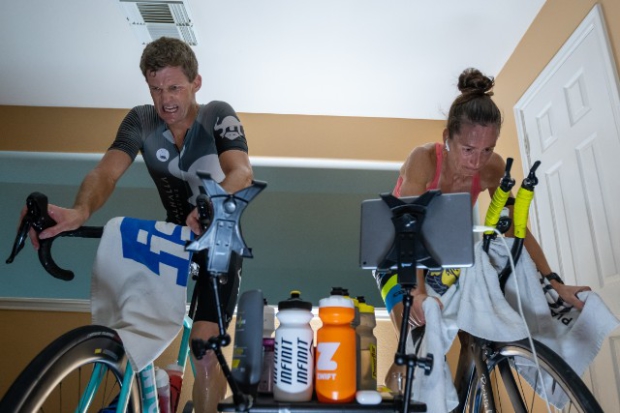
My favorite was the response I got from Kona bike course record holder, Cam Wurf, who blitzed the climb in 36:29 during an intersquad race against his Team Ineos teammates. I asked if he had any pacing tips from his 4th place finish where he was 29 seconds ahead of 4x Tour de France winner Chris Froome. He said, “to be honest I was flat out following Rohan (Dennis) and can barely even recall what the climb was like.”
Gotta love that guy’s brutal honesty.
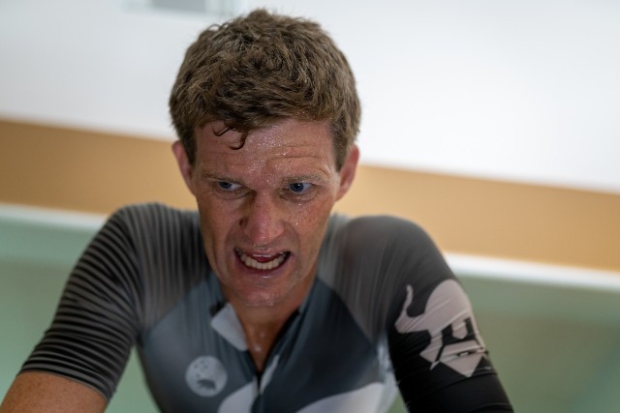
I’d like to think I threw caution to the wind and used Wurf’s swashbuckling style attacking from the bottom, but realistically my approach was more similar to Kempenaer’s advice to “target your 20 minute max for each and every mini-sector, no excuses until half way. Push hard in the corners so you can reward yourself with a little recovery if your average is still above your 20 minute max. The hurting remains manageable. In the end you might fade a little, but keep targeting your FTP (only allowed after half way).”
Boiled down, start out hard and hold on for as long as possible.
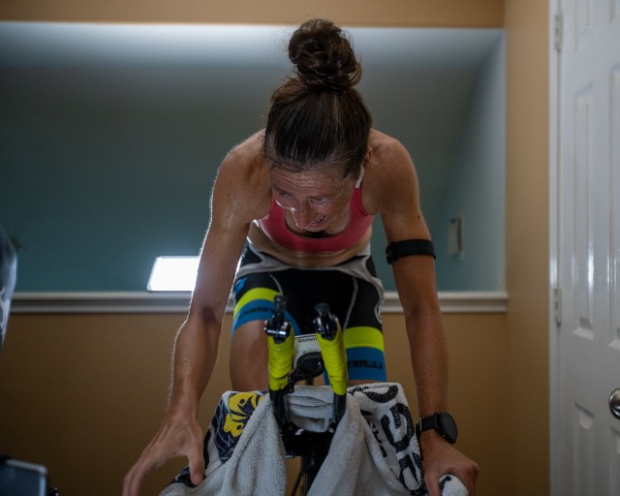
This is how Jana described her pacing effort on the day.
“My strategy was to go hard from the beginning so that I could try to close the gap to you ASAP. But since that never happened even after the first 20 minutes which I rode pretty close to my 20 minute best power ever I just tried to hold on to whatever I had till the end.”
She continued, “I focused on pushing the steepest sections even more as that’s where you can gain the most time. I also tried to climb the steep sections out of the saddle instead of seated to change where the pain was coming from.”
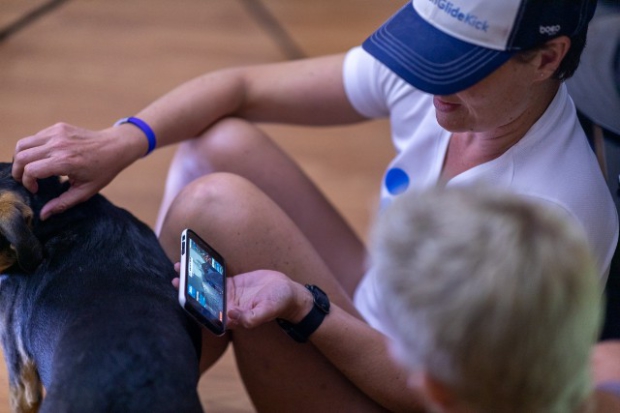
It helped having a few friends on hand to offer some timely words of encouragement, although it should be noted on this occasion both Gemma Hollis and Andi McKinley were firmly rooted in Jana’s corner.
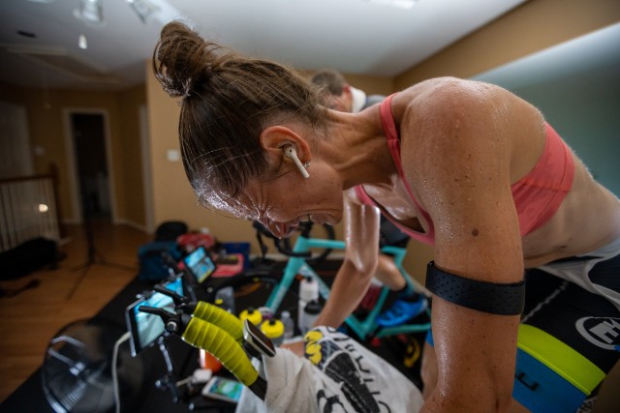
In addition to getting in a good warm up, Jana offers some final suggestions to unlock your potential on Alpe du Zwift:
"Stay in the moment and focus on one turn at a time. Try not to think about how much of the mountain is left. If you have gone up the mountain in the last 30 days, you will see your current best time for each turn on the screen. Try to beat it, even if it’s just by 1 second. It adds up."
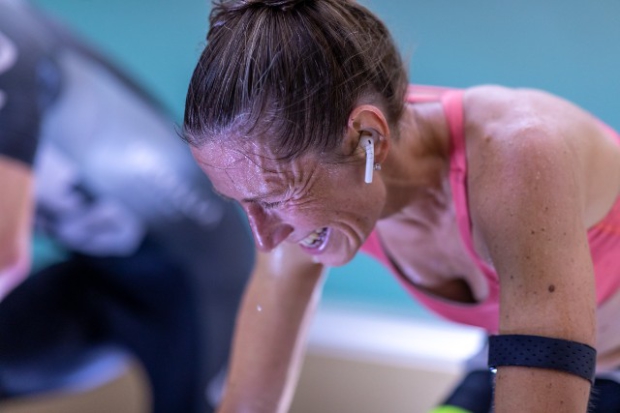
Some more tips if you choose to head up the mountain: be mentally ready to suffer and have fun. If you need a little breather, do it on the less steep sections and use your power on the steepest inclines as that’s where you’ll gain the most time.
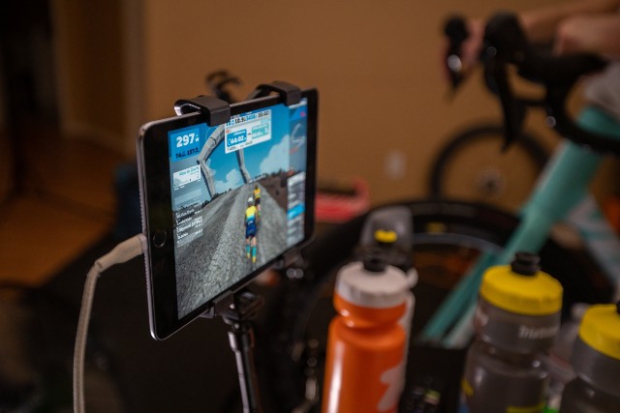
Enter a Zwift race that goes up the mountain as this can give you a little extra push.
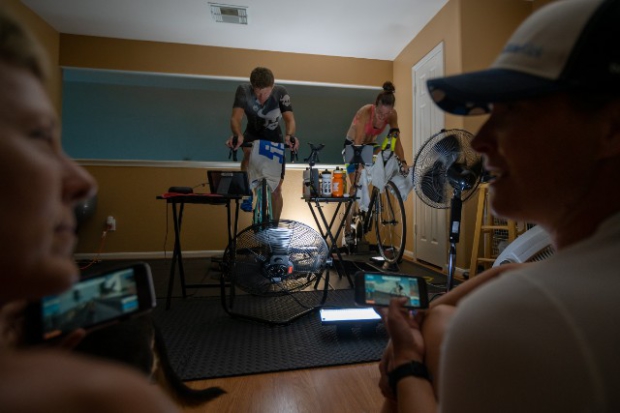
Make sure to use an extra fan or two if you are planning an all out effort.
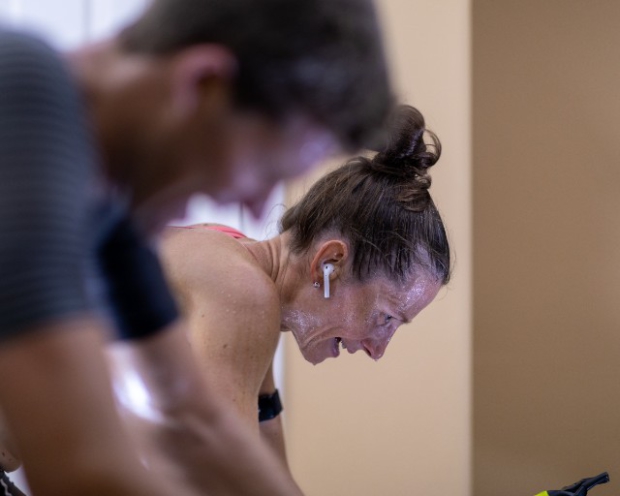
For those curious, I bettered my previous best by over 3 minutes and stopped the clock in 43:53. I managed to hold off Jana, who lowered her best time to 44:19.
Special thanks to photographer David Reynolds who shares his work on Instagram @DigitalKnightProductions.



